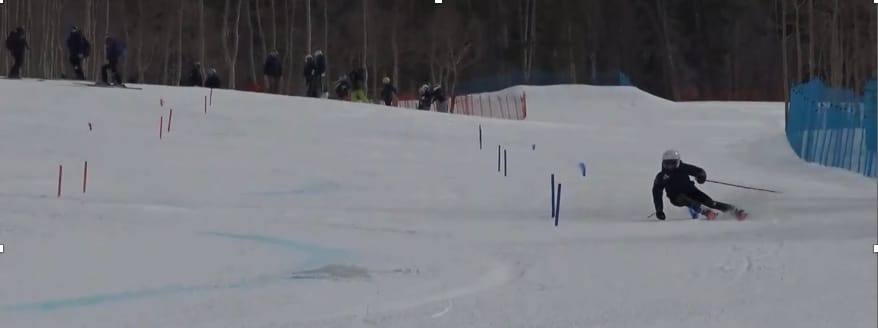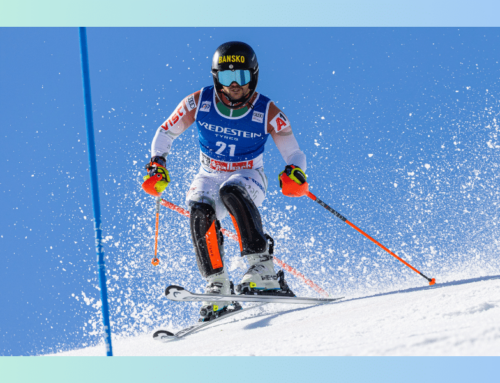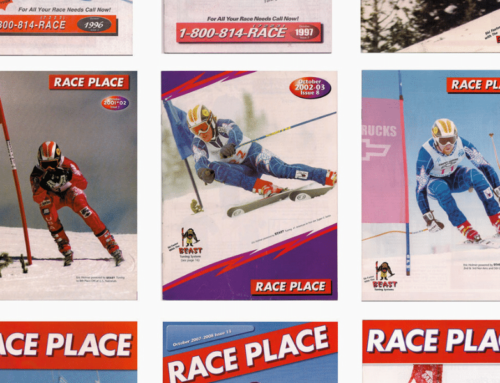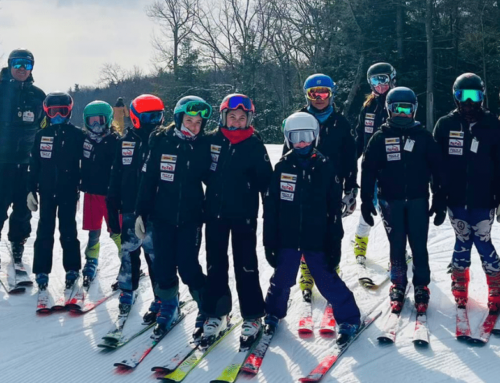COURSE SETTING IDEAS: Promoting Turn Shape
COURSE SETTING IDEAS: Promoting Turn Shape
Do you need help to connect your athletes’ quality free skiing with strong, fast skiing in competitions? Do you find maintaining the consistency your athletes have cultivated through free-skiing exercises challenging when you witness them reverting to the same skill deficiencies and poorly timed tactics you’ve been working hard to eliminate?
This course setting idea offers skill-based training to connect strong fundamentals with efficient, dynamic turns in traditional race courses.
Explore our Turn-Shape Drill Course to refine entry, belly, and exit points for SL and GS, with brushes and stubbies.
With this specialized training, the drill course will boost skills honed in directed free-skiing outside the gates.
Examine the skier below. The top hero gate and middle brush shaped his path. Without these, he’d likely aim straight at the bottom stubby, risking lost carving ability. The top brushes encourage early edge angles, enhancing ankle, knee, and hip angulation. This improved form guides him past the bottom stubby, setting up a strong direction for the next turn.
Check out the diagram below. This illustrates the course set and provides instructions on how to set it up.
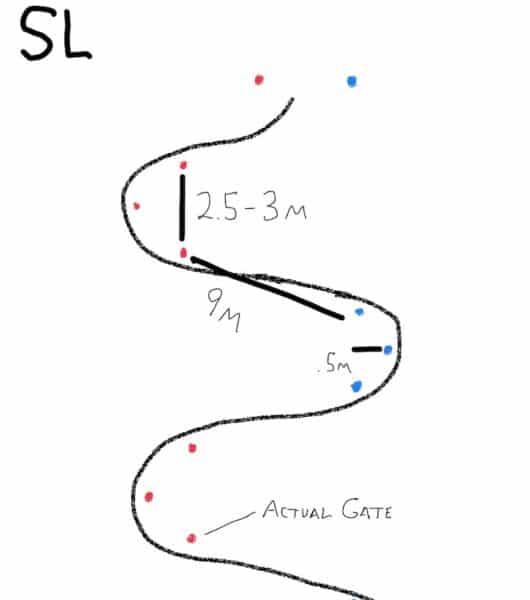
For example, in an SL turn shape course, set a distance of 9 meters from the bottom brush of one turn to the top brush of the next.
The vertical distance between the two brushes measures approximately 2.5 to 3 meters. The horizontal offset to the turn apex hero gate or brush from the mid-point of the two vertical brushes should be 0.5 meters or greater (roughly from the middle of the boot to your ski tip).
When you set up the course, it is easier to start by placing the vertical brushes first. Later, circle back or have another setter place the brush or hero gate marking the turn’s apex.
Opt for flatter terrain to boost athletes’ confidence in carving rather than skidding. This course is practical on steeper slopes, too. Here, athletes are urged to target the middle brush, promoting deliberate ski edging over hastily aiming toward the bottom gate.
An appropriate offset between turns is crucial. Skiers can then test the limits of their ski edge angles!
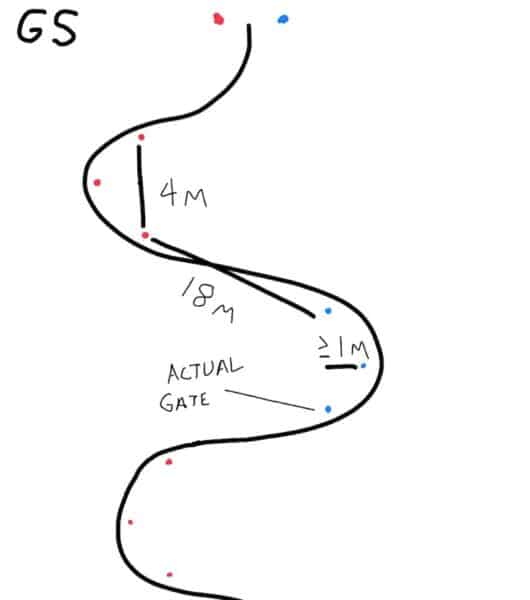
A GS turn shape course requires roughly double the measurements, sometimes even greater, compared to the SL course.
Turn Shape Course vs. Conventional Training Course: A Comparative Analysis
In a turn-shape course, measurements extend further than a typical training/race course. This deliberate increase promotes strong fundamentals, emphasizing early-edge engagement. The elongated transition between turns also allows athletes ample time to regain centered balance for a strong start to the next turn.
BENEFITS:
These course sets are ideal for young or novice racers but are adaptable for all skill levels.
Here are some of the benefits:
Encourages early ski edging and carving. It also enhances the athlete’s understanding of resisting the turn forces they experience while carving.
Discourages stivoting and gate pinching, crucial for teaching young athletes proper progressive ski edging.
In the photo below, the skier pressures and tips the skis early, avoiding a direct line to the apex gate and the resulting skidding below the middle gate. By the middle apex brush, weighted edge angles are well-established.
In the drill course practice exercises used in their directed free skiing, like hands on hips or knees, again suggested on flatter terrain. These drills are challenging and help athletes better grasp turn-shape concepts before reintroducing poles.
Observe the photo below: The hands-on-hips exercise promotes ankle and knee edging, enhancing hip angulation. In this turn-shape course, the skier demonstrates excellent ski edging and strong hip positioning.
The idea originated to help athletes struggling with their line. Additionally, it aims to reinforce edging/carving skills learned from directed free skiing.
Without skill development, new racers tend to focus on the first visual cue they see.
The gate is most likely the initial visual cue in a typical race course. Most inexperienced competitors take a direct line to the gate. It seems faster. However, inexperienced racers flatten the ski at the turn initiation, prohibiting a weight transfer to the outside ski and progressive edge angle development. This results in missing a carved apex or belly of the turn, reducing speed and power. Consequently, they finish the turn below the gate without carrying speed from turn to turn.
The turn shape course teaches athletes to use weight transfer and ski edging by encouraging a rounder, deeper turn shape. It begins with tipping the skis using ankles and knees at the top brush and progresses to developing strong hip angulation through the middle and bottom phases of the turn, marked by the second and third brushes
I had the chance to ask our athletes about their experiences after training in the courses.
“Definitely less skidding and more carving around the gate,” says Hailey Anderson, a current U12 athlete at Ski and Snowboard Club Vail. “With the brushes that mark the turn shape, I can get on edge and pressure the top of the turn with a lot more confidence! Without the brushes, I probably would have tried to cut the turn off more by skidding instead of carving.”
Progressing to Training Courses: A Path to Mastery
In both our turn-shape SL and GS courses, stubbies typically mark the top and bottom of the turns.
The bottom brush or stubby marks the location of the gate in a traditional training course.
As athletes gain more experience in the course, consider replacing the bottom stubby (hero gate) with a GS panel gate or flex gate for slalom
Examine the following photos captured at the same point in the course, showcasing athletes executing identical arcs approaching the bottom stubby/gate.


Here it is in SL:
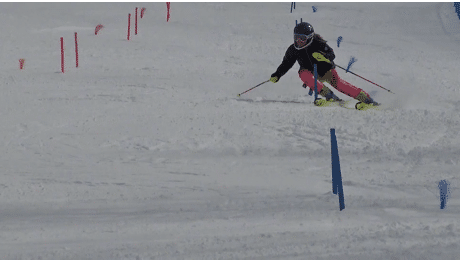
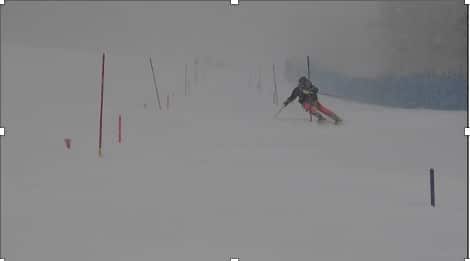
In many cases, athletes we work with found this turn-shape course incredibly helpful in understanding how to:
1) Get closer to the gate while still carving the ski (at higher edge angles)
2) Enhance the fundamental skills they worked on outside of the gates
This course set is customizable to accommodate different ages and skill levels.
On the other hand, if the athlete is still drifting the skis to initiate the turn, increasing the horizontal offset of the middle brush from the vertical ones challenges them to generate larger angles!
Hence, your course set can be adjusted in distance or offset based on your athletes’ requirements. U14 athlete Stella Phillips at SSCV shared, “My turn shape would be different without the turn- shape course. I would take it too high and round a line. The brushes helped me stay on the fast line, bringing me closer to the gate.”
After athletes gain confidence, remove the brushes, leaving only the gates. Emphasize the significance of early edging, increasing edge angles throughout the turn. In the photos below, the skiers no longer have brushes. Repetition through the turn-shape course develops early edging/carving habits.
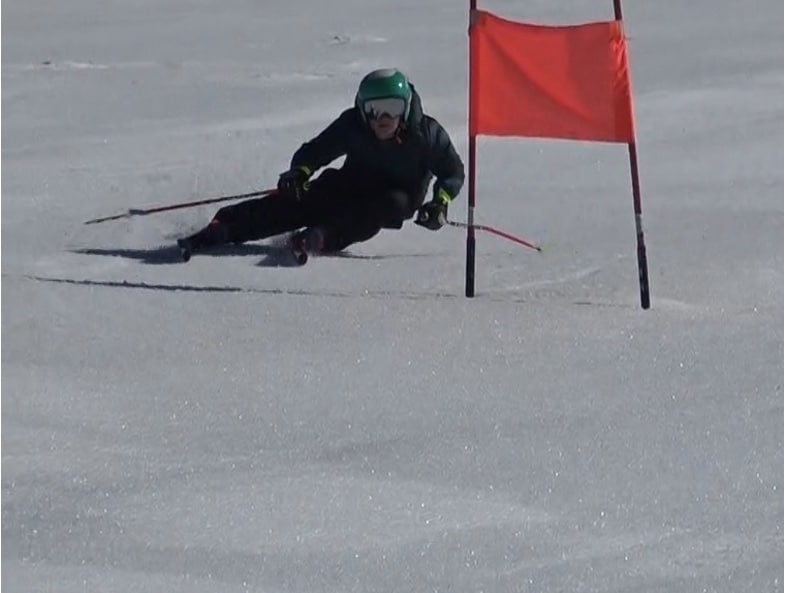
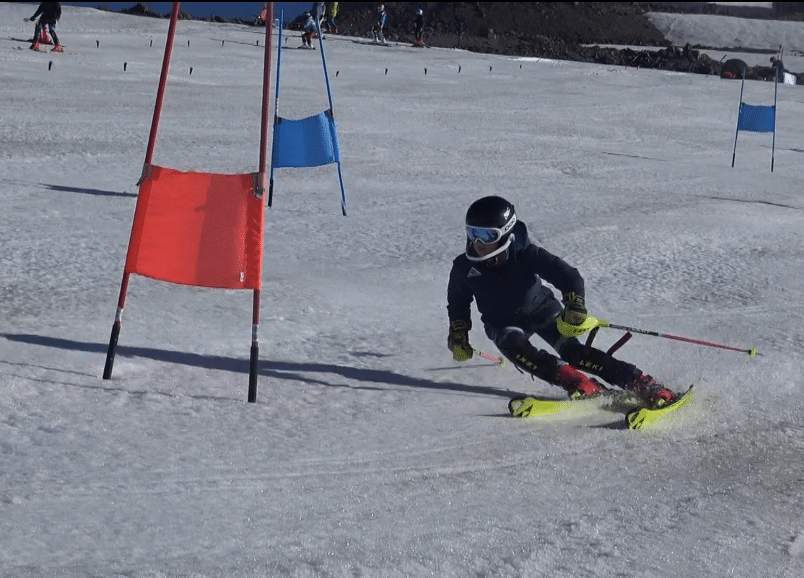
In summary, the goal is for athletes to enhance skills during training courses, not just in free-skiing exercises.
